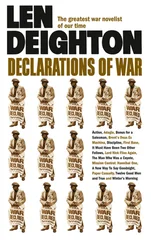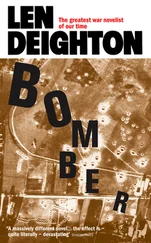Cairo is the world’s oldest city. It has always been the cultural centre of the Arab world and so remains. It sits astride the Eastern Mediterranean and the Suez Canal. It is cosmopolitan in a way that few other cities – and certainly no other Arab city – comes near to being. The unique way in which the River Nile mixed the minerals of the Blue Nile and the rotting vegetation carried by the White Nile made Egypt’s flooded lands exceptionally fertile and fed its population for more than four thousand years.
I find it awesome that in the time of Jesus Christ, visitors came to see the pyramids which had been built two thousand years earlier. Cairo has always known visitors. Cairo controls the only practical route between Europe and the Orient and is the most attractive stopover between Europe and Africa. Travellers are likely to settle permanently in such stopover places, as any New Yorker will confirm. And so Cairo, amid its Muslim millions, is home to a most amazing mixture of races and religions from Copts and Catholics and Jews to Hindus and Buddhists. This diverse array was especially apparent during World War Two.
It was World War Two that made Cairo into a strategic prize, capture of which would have changed history. It is early 1942, when City of Gold begins. Hitler’s armies are occupying the greater part of the continent of Europe from northern Norway to France’s border with Spain. In June 1941 the German army had invaded communist Russia and advanced all the way to the outskirts of Leningrad and Moscow. As the year ended the USA suffered a crippling surprise attack on its Navy in the Pacific; and Germany – fulfilling its agreement with Japan – had declared war upon America.
France had capitulated to the Germans, and French soldiers and sailors in North Africa had also decided to stop fighting. The Italian forces in Libya – an Italian colony – had been waging an unsuccessful battle with the British forces in neighbouring Egypt. To shore up their Italian allies the Germans had sent elements of its armed forces under an obscure but singularly ambitious General named Erwin Rommel, who owed his position to being a favourite of Hitler. As the story opens Rommel’s armoured units were coming uncomfortably close to Cairo.
It is Cairo in that period of early 1942 that I wanted to depict as accurately and dispassionately as I could manage. When I first visited the city, World War Two had been over for ten years. There was plenty of evidence of the earlier times but before starting to plan this book I needed much more. I went back to look afresh. I talked with Egyptian friends and enjoyed the immense benefit of a wife who had lived in Cairo with her parents, who had studied there and speaks and writes Arabic. I scoured diaries and letters, memoirs and endless photo albums. I had become friends with Walther Nehring (who as a Gen-Lt. had commanded the Afrika Korps). Other German desert veterans also provided their viewpoints. But more riches were to be found on my doorstep, for England was packed with people who had spent some wartime years in Egypt. And could they remember!
Looking back, I see that City of Gold had some things in common with my other two books about men and women fighting World War Two. Bomber and Goodbye Mickey Mouse, like City of Gold, were dominated by the environment in which the stories were set. All three books demanded a sympathetic understanding, and persuasive depiction, of foreigners. All three books were subjected to a long period of consideration as I researched time and place. Cairo in 1942, threatened from the desert by German tanks, and in its streets by rioting Egyptians, was undermined by corruption and theft on a massive scale (only to be equalled in scale and audacity during the Vietnam war.) To cover such a complex period, with any chance of reflecting the way it really was, required a large cast of characters: many different people with many different motives tugging in different directions. Only by this means could the bewildering atmosphere of Cairo 1942 be demonstrated. While the other two books also show dissension and dismay they are about unified casts of characters. There is little or no unification of the people in my wartime Cairo. The streets were crowded with Arabs, Italians, Greeks, French and British. There were many different uniforms worn by soldiers, sailors and airmen, South African servicemen and Australians, New Zealanders and Canadians, Indian soldiers and Poles. There were men of the Egyptian army too, although their country remained technically neutral and their declared enemy was the British ‘occupiers’ rather than the Germans at the gates of the city. To add to this social confusion there were countless sub-divisions. Most conspicuous among the civilians were the rich: Egyptian, Greek, French and Italian families, many of whom had lived there for several generations and were determined to keep their elegant lifestyle and privileges. The British enjoyed special social divisions: the most exclusive were civilians permanently employed in the administration, soldiers of Britain’s pre-war regular army were distinguished from men who joined the army simply to fight the war. Combat soldiers from the desert looked with scorn upon the ‘chairborne’ warriors who manned the desks, and of course there always remained the steep class divide between British officers and ‘other ranks’. At the bottom of the heap there was Egypt’s vast population of ragged, half-starved peasantry, of which a sizable proportion was crippled or diseased.
Several of my characters are based upon real people but since no one in the story comes out of it with glory I have not used any real names apart from General Rommel and ‘Ambassador’ Lampson, for whom no one with whom I spoke had a good word. More than one person with firsthand experience thought that many aspects of present-day troubles in the ‘Muddle East’ were largely a legacy of the well-publicised bullying of King Farouk. Some of the episodes here, such as Lampson’s visit to the Palace, are based upon eye-witness descriptions. Most of the places are depicted as accurately as I am able.
Len Deighton, 2011
In the final months of 1941, General Erwin Rommel – commander of the Axis armies in North Africa – began to receive secret messages about the British armies that faced him. The source of this secret intelligence was not identified to Rommel. In fact, the contents of the messages sent to him were carefully rewritten to prevent anyone guessing the source of these secrets and how they were obtained. But the messages were startling in their completeness; the dates of arrival of supply ships and their cargoes, the disposition of the Allied armies and air forces, the state of their morale and their equipment, and even what their next operations might be were provided promptly and regularly to Rommel’s intelligence officer.
Said one specialist historian, ‘And what messages they were! They provided Rommel with undoubtedly the broadest and clearest picture of enemy forces and intentions available to any Axis commander throughout the whole war … In the see-saw North African warfare, Rommel had been driven back across the desert by the British … but beginning on January 21, 1942, he rebounded with such vigour that in seventeen days he had thrown the British back 300 miles.’ *
Cairo: January 1942
‘I like escorting prisoners,’ said Captain Albert Cutler, settling back and stretching out his legs along the empty seats. He was wearing a cream-coloured linen suit that had become rumpled during the journey. ‘When I face a long train journey, I try and arrange to do it.’
He was a florid-faced man with a pronounced Glasgow accent. There was no mistaking where he came from. It was obvious right from the moment he first opened his mouth.
Читать дальше












